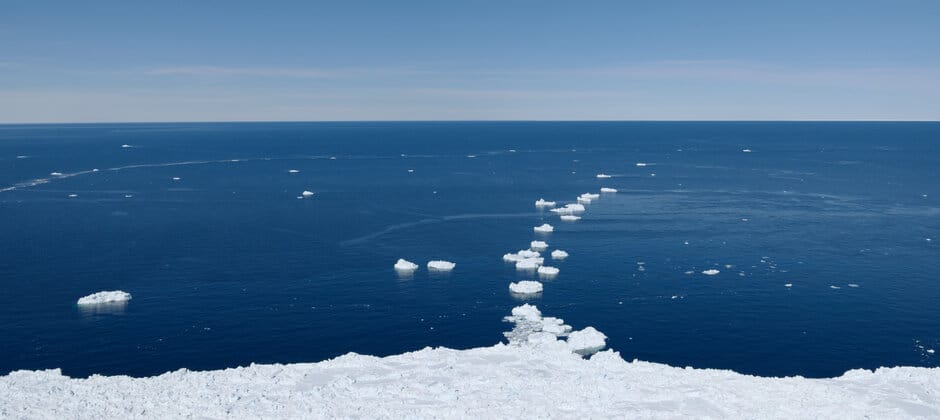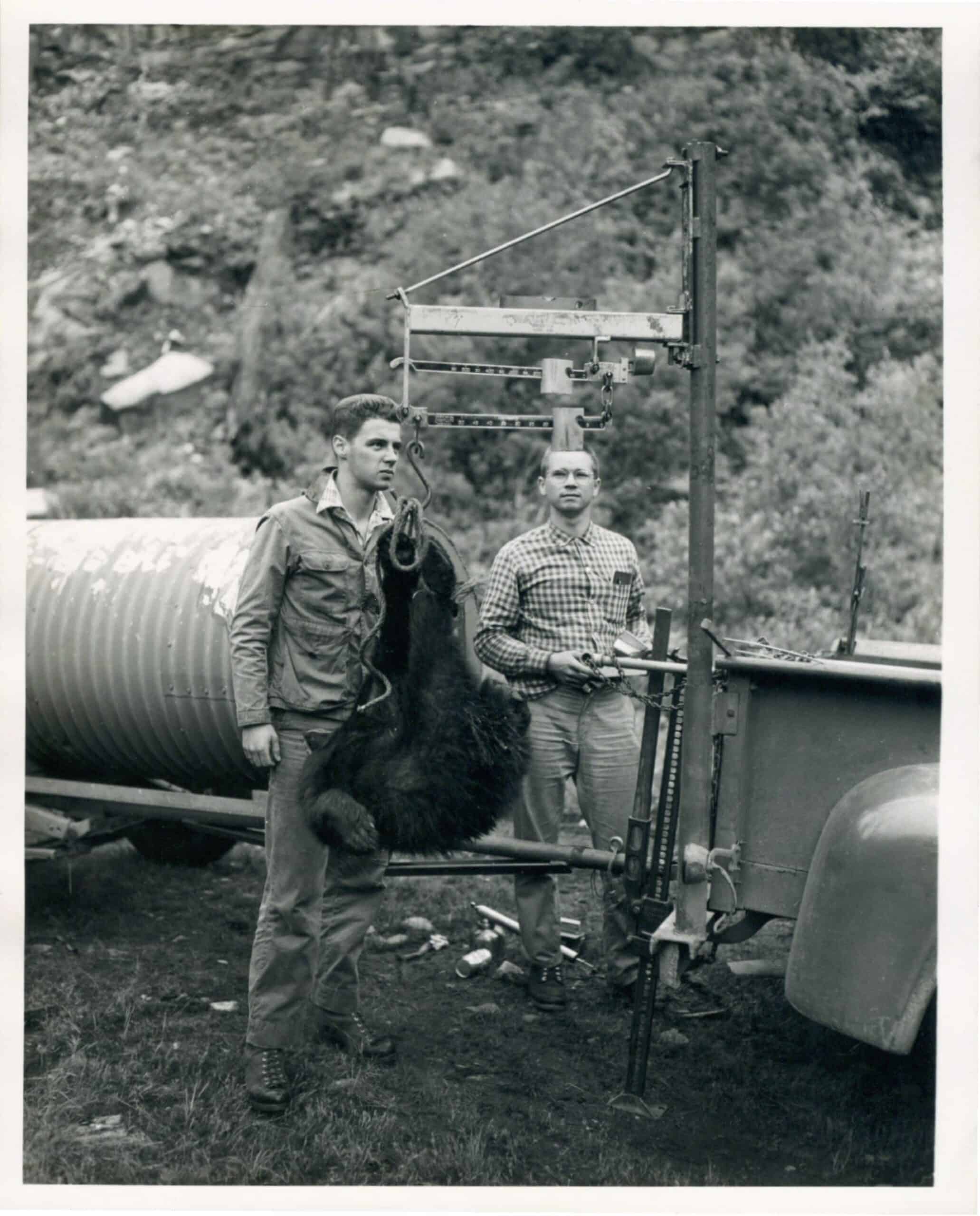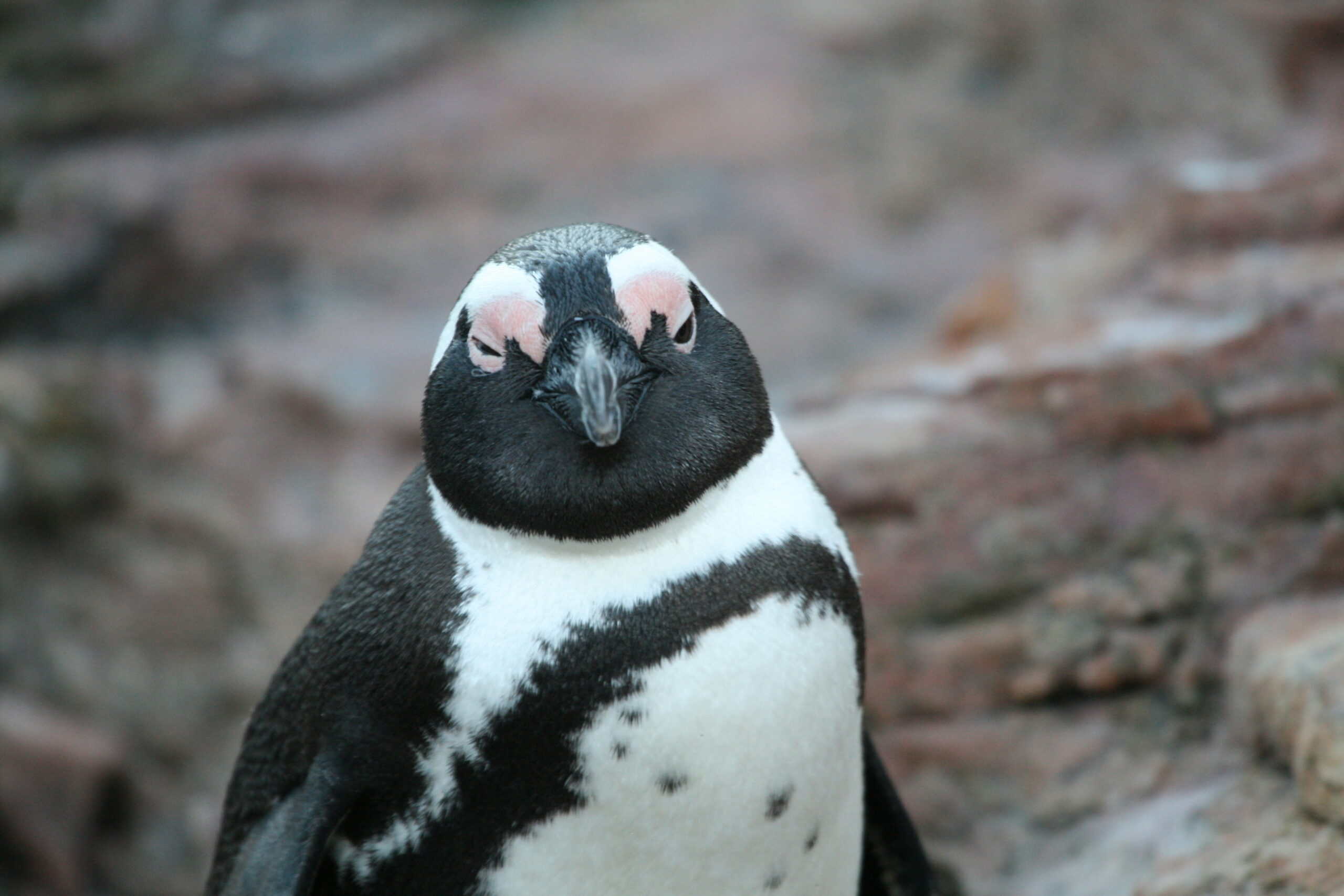Share this article
Polar bears hunt seals along large cracks in sea ice
Polar bears in western Hudson Bay sometimes follow large, linear cracks in the sea ice while searching for prey.
Those large cracks, known as flaw leads, can occur between fast ice, or sea ice that is fastened to the shore, and pack ice, which is made up by drifting patches of free floating floes of varying sizes. Previous research has shown that these flaw leads are ecologically rich areas for marine mammals. Harbor seals (Phoca vitulina), for example, live near them, perhaps in increasing numbers.
Researchers wanted to see whether polar bears (Ursus maritimus) exploited these areas to prey on the seals.
The researchers used fine-scale satellite images that allowed them to map the differences between open water and the different kinds of ice, from 2009 to 2018.
They then compared this information to data collected from GPS collars fitted to polar bears over the same time period to see how the bears dealt with the flaw lead.
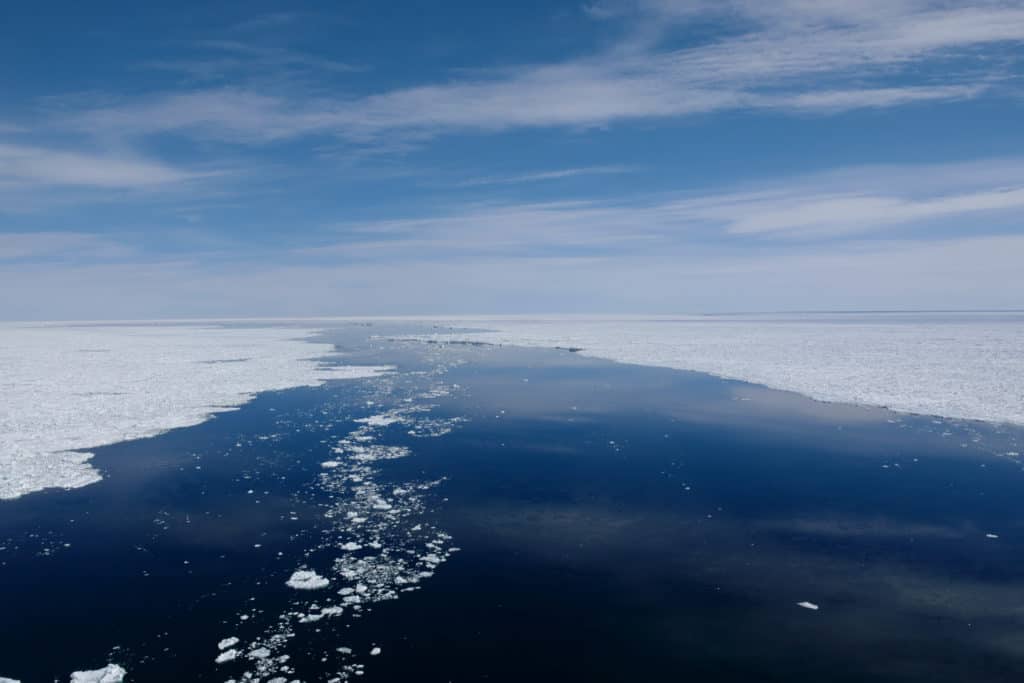
A flaw lead between ice sheets in Hudson Bay. Credit: Andrew Derocher
Both flaw leads and polynyas, which are larger open areas of water between ice, change throughout the year.
“The flaw lead is so dynamic,” said Erin Henderson, who conducted the research, published recently in the Marine Ecology Progress Series, as part of her master’s work at the University of Alberta. “It can be open one day and be kilometers wide, then close up the next day.”
By comparing the GPS points with the ice maps, the researchers could see how the bears were using the area.
“Some of the bears were using the flaw lead, but they tended to use it for smaller periods of time,” Henderson said, adding that the bears often moved quickly along the cracks in relatively straight lines. “That suggests the bears were using the flaw lead to hunt.”
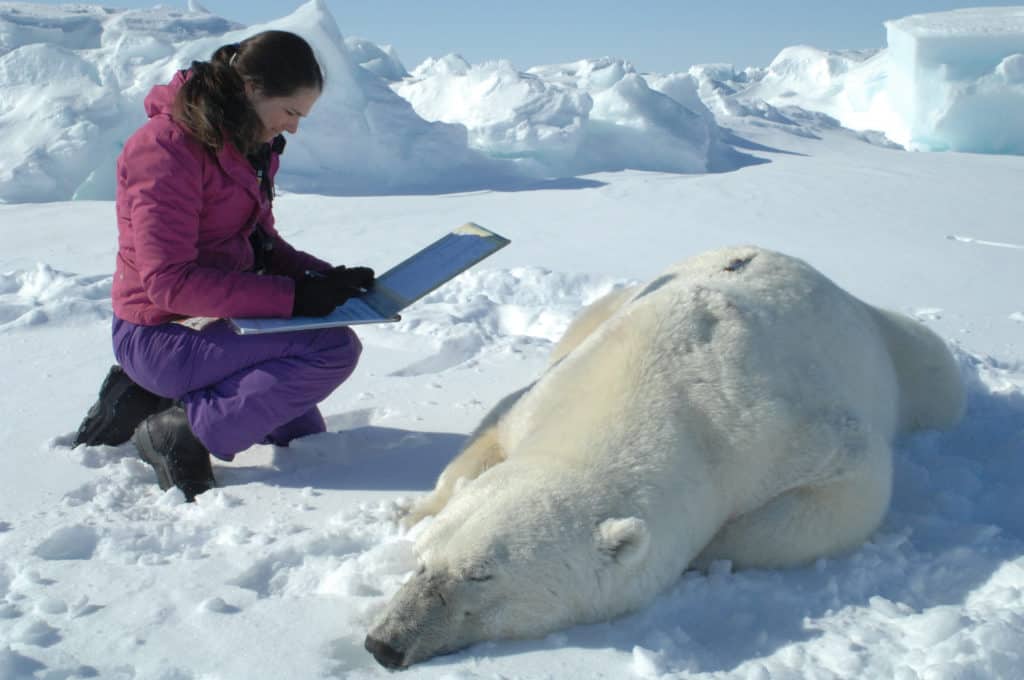
Erin Henderson collects measurements on a polar bear in western Hudson Bay.
Credit: Andrew Derocher
Between hunts, the bears seemed to moved away from the cracks, though. The flaw lead appears relatively straight on a large-scale map, but on a finer scale, it’s characterized by a number of ice floes and smaller cracks that bears might have to swim across. Henderson speculated that when they aren’t hunting, bears might avoid these areas if movement involves more effort.
“It might deter them from crossing if it meant they had to make a long-distance swim,” she said.
The analysis also revealed that mothers with cubs were less likely to use the flaw lead. Henderson speculated that this might be because the mothers were trying to avoid potential danger posed to their cubs by encountering males.
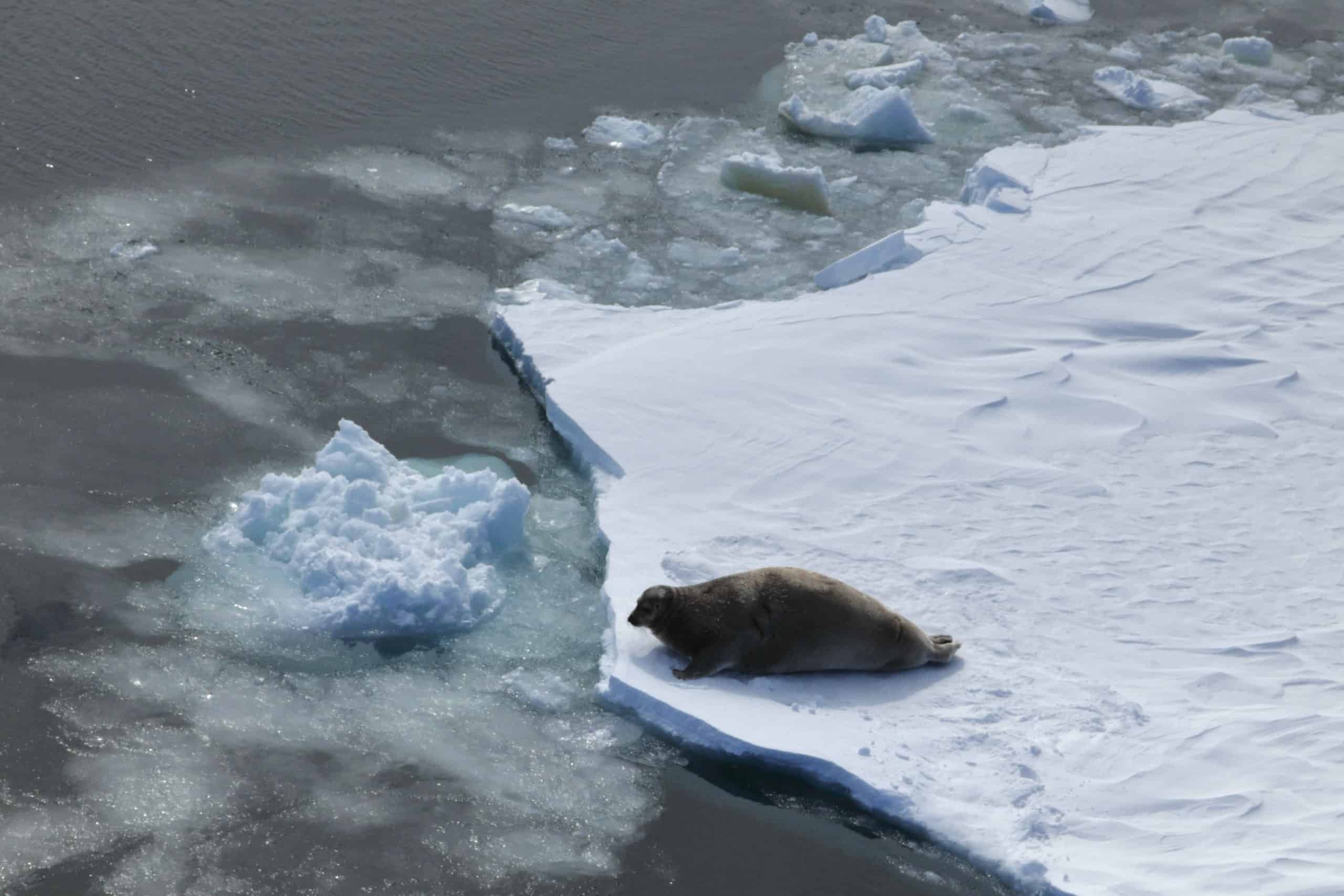
A bearded seal (Erignathus barbatus) lays next to a flaw lead in Hudson Bay. Credit: Andrew Derocher
If climate change contributes to wider flaw leads in the future, bears may have to spend more effort to use the area. Increasing numbers of prey in this area might also attract more bears, posing potential risk to mothers and cubs. In other words, the mother bears might prioritize the potential of food against the safety risk.
Henderson said that future long-term studies would be needed to show whether polar bears are changing their use of these flaw leads as climate change affects the icescape.
Header Image: Polar bears sometimes travel along the edges of ice sheets. Credit: Andrew Derocher



